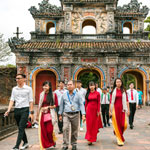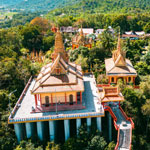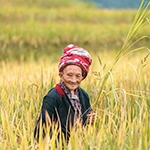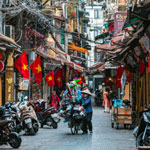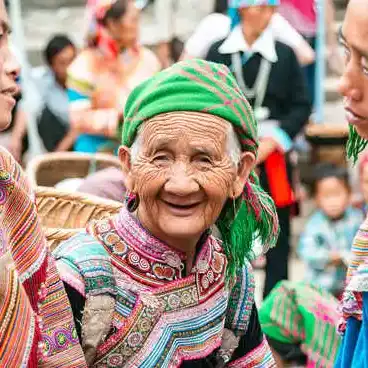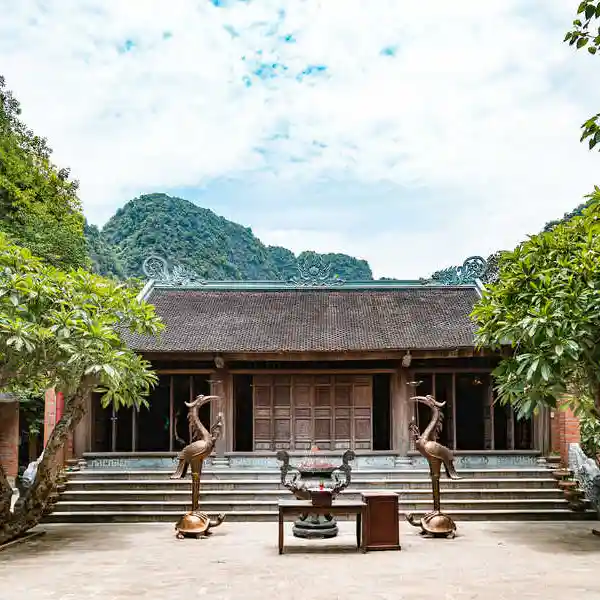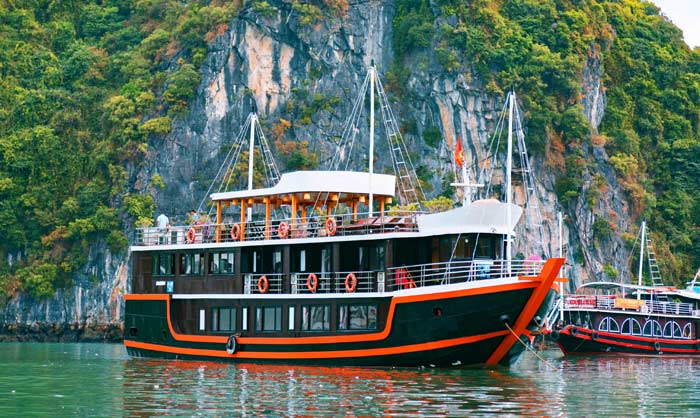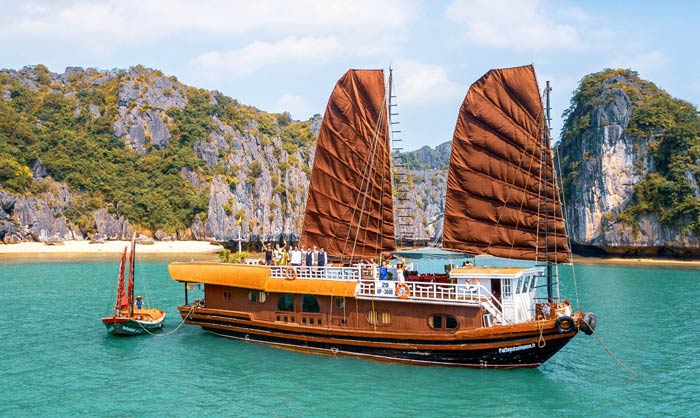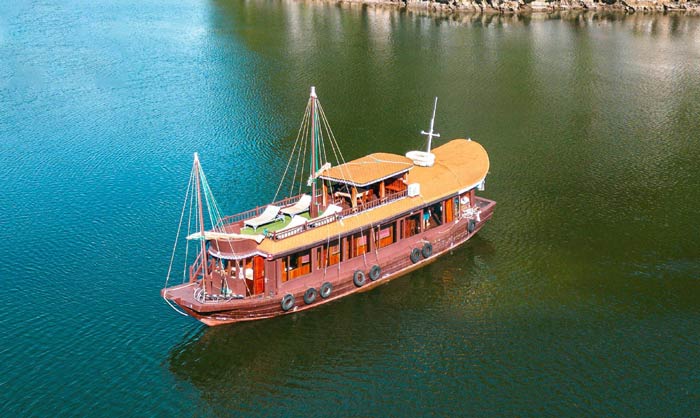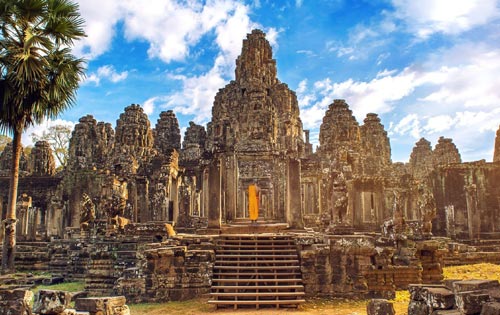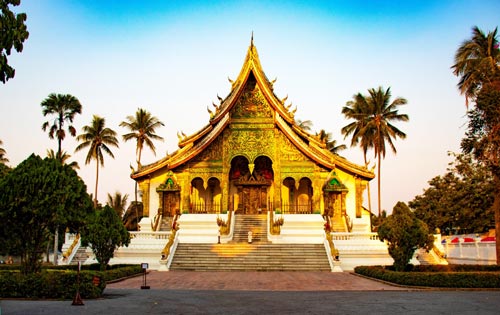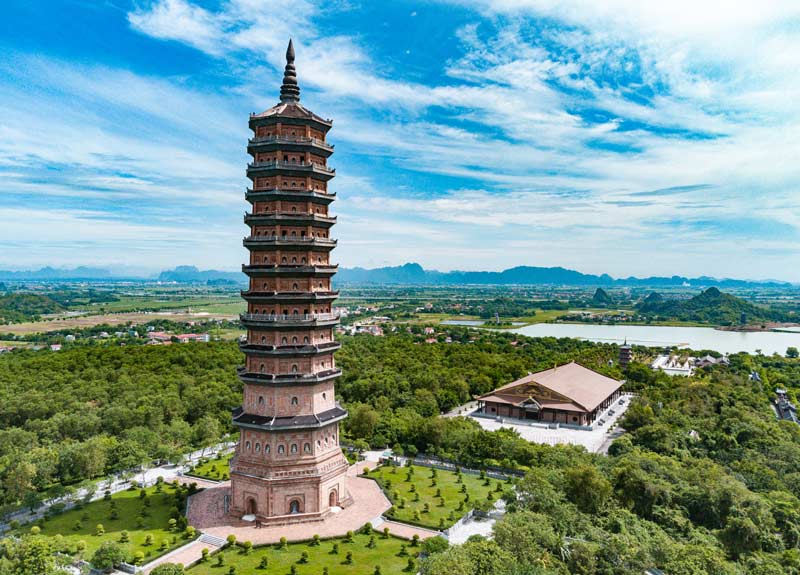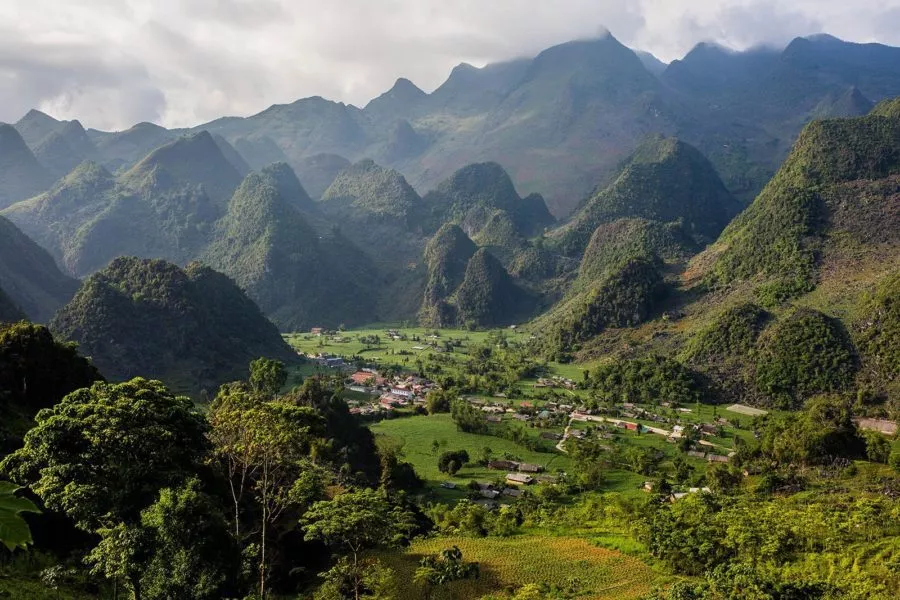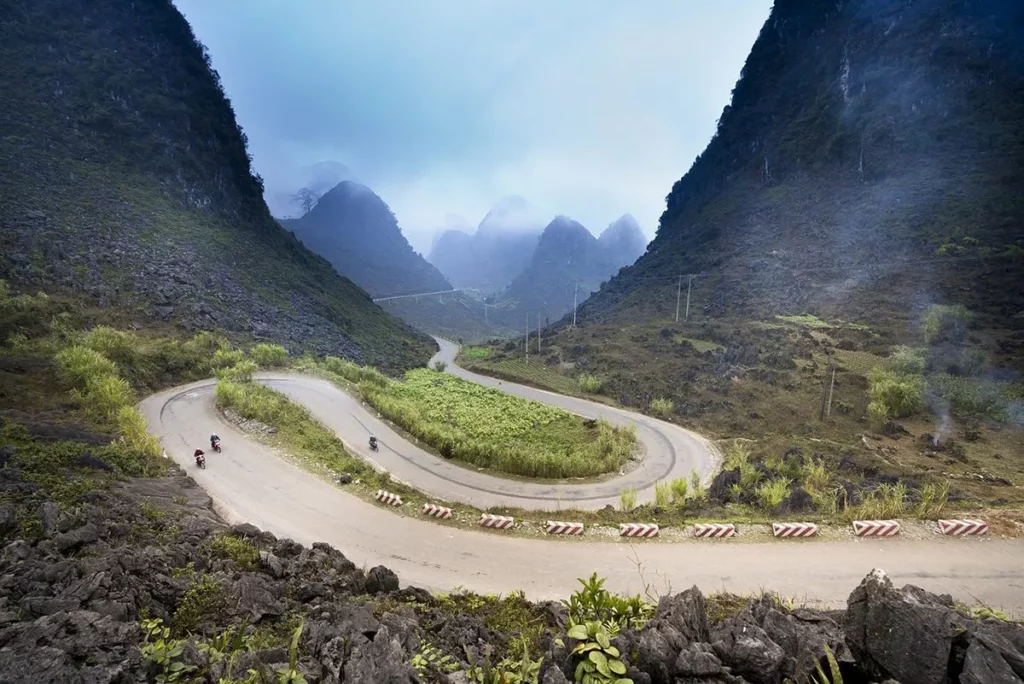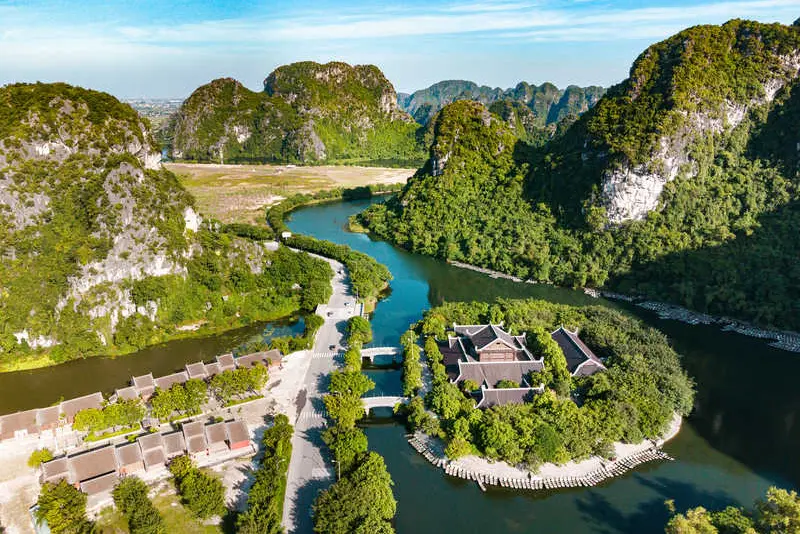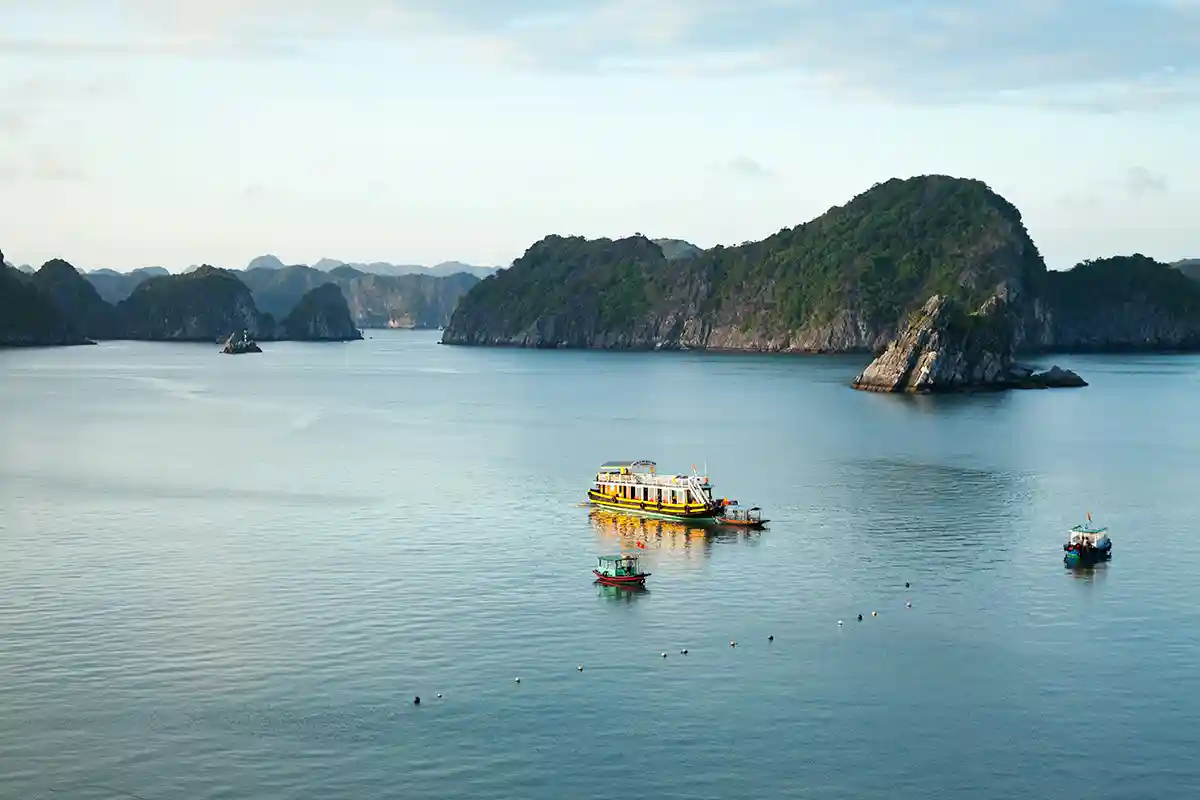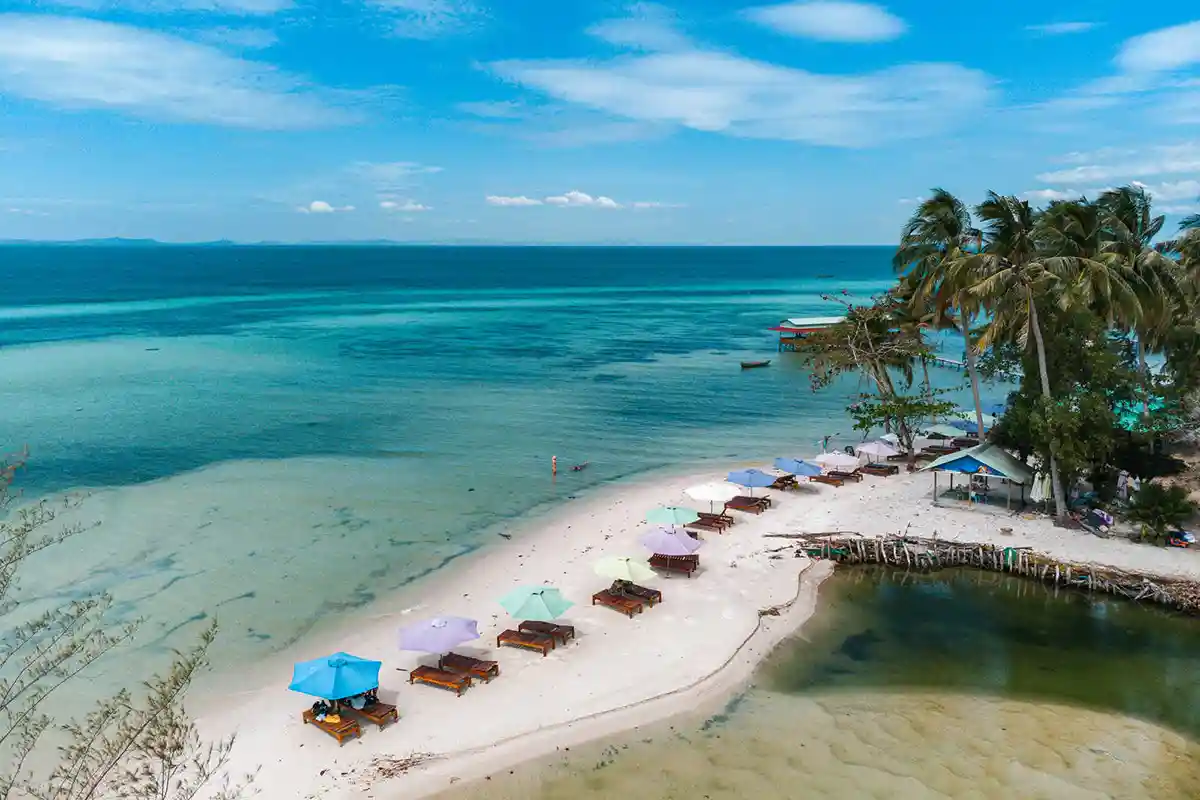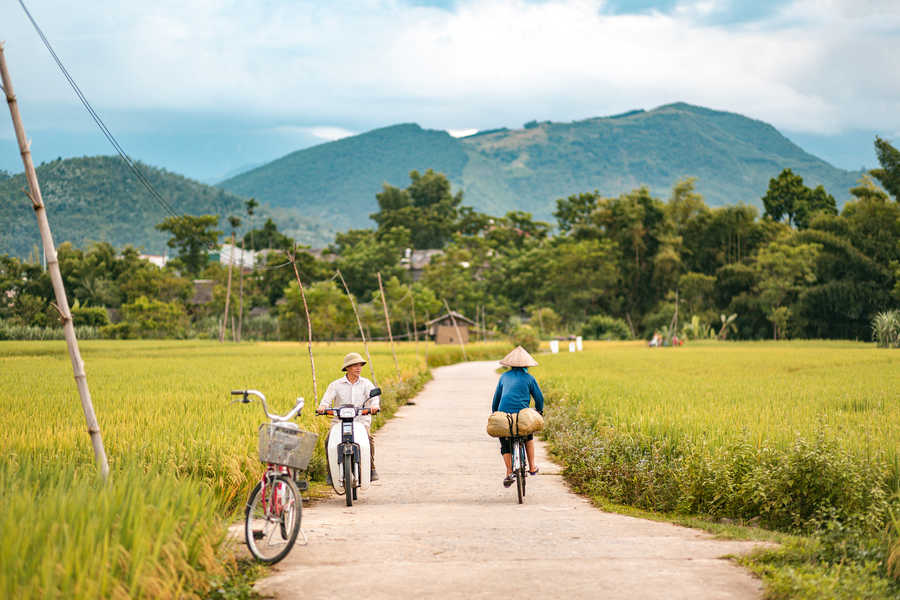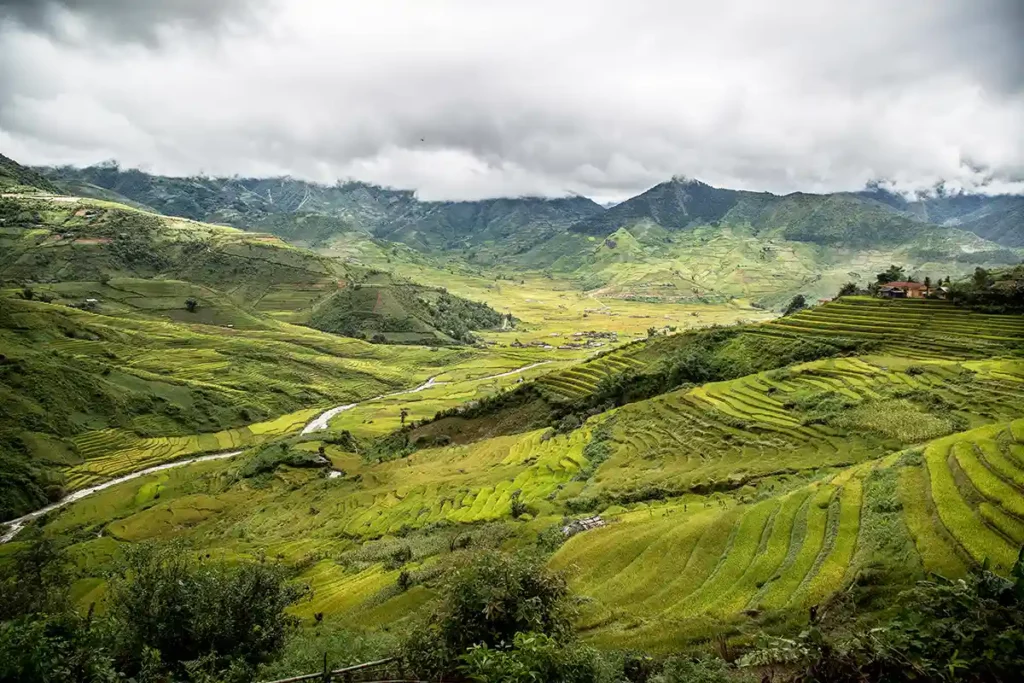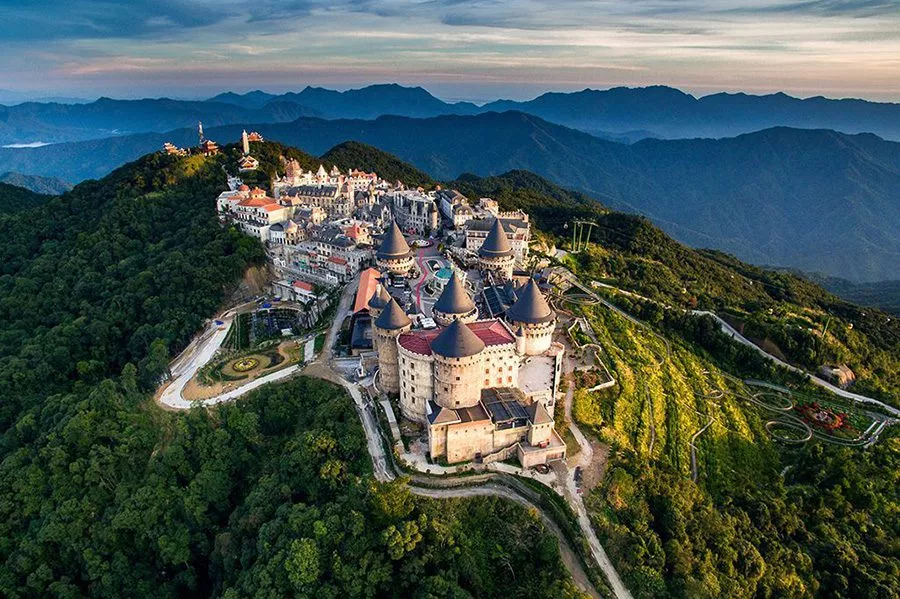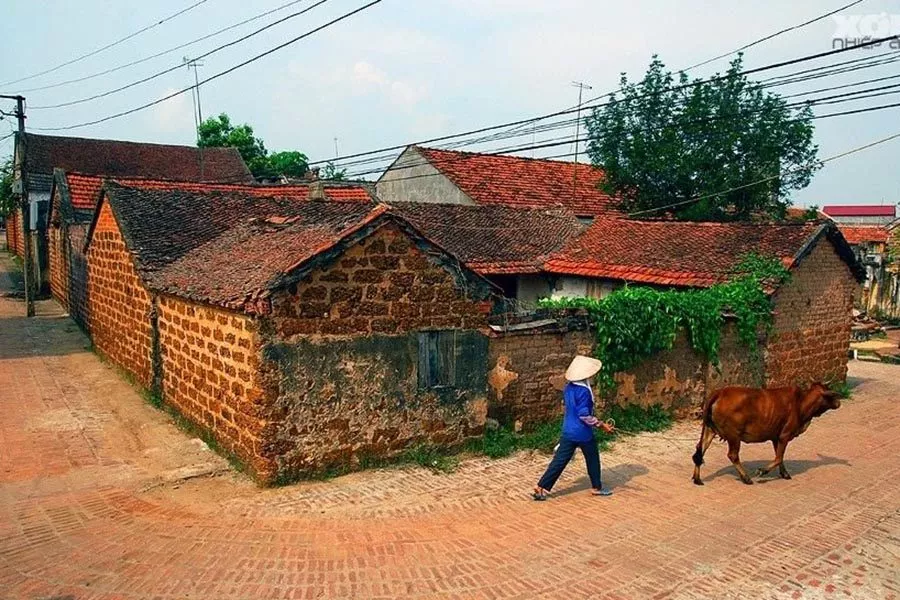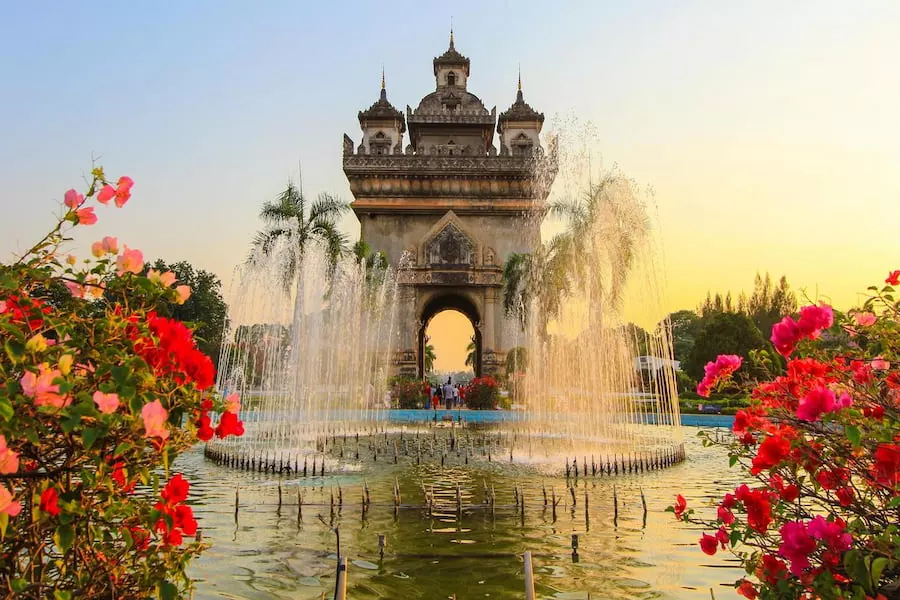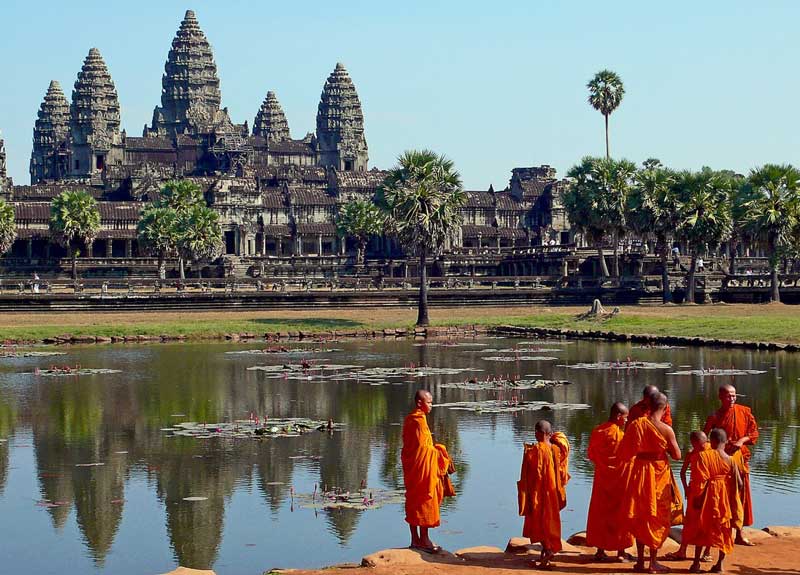Vietnamese beliefs are complex, blending several philosophies that have been integrated into their culture over time.
In contemporary Vietnamese history, we have seen a “boom” in spiritual practices after Doi Moi (the economic reform and opening period that began in 1986). This movement was even encouraged by the Vietnamese state, which turned Ho Chi Minh into a mystical figure.
Spiritual practices thus continue to play a major role in the lives of the Vietnamese people. This is largely due to the influence of the Chinese era. The Vietnamese are still guided by what is known as “the Three Teachings”, or Tam Giáo in Vietnamese — the teachings of Confucianism, Buddhism, and Taoism. These philosophies form a syncretism that continues to shape people’s views on life, death, and proper conduct today.
We will briefly describe below what each of these belief systems encompasses. You will also find information about the presence of Christianity and about a religion specific to Vietnam — Caodaism.
Buddhism in Vietnam
Originating in India, Buddhist philosophy later spread to China before establishing a lasting presence in the region. It even became a “state religion” for a time during the Ly Dynasty (1010–1214). For several centuries, Buddhist monks served as royal advisers and held a privileged position at the royal court.
Beyond the belief in karma (“I am shaped in this life by what I did or was in my previous life”), Buddhism teaches virtuous ways of thinking and behaving. There are “right” ways to think, see, speak, act, and meditate. In Buddhism, time is circular — there is neither a beginning nor an end — but actions carry great importance and determine future lives.
Throughout your journey from North to South Vietnam, you will come across and visit many pagodas, notably the Tran Quoc Pagoda in Hanoi, the oldest in the capital, built under Emperor Ly Nam De in the 6th century AD.
Today, Buddhism is celebrated as a spiritual force of the Vietnamese nation, whose teachings helped the country in its struggle for freedom. Although the state and religion are officially separate, Buddhism now plays a role in national development — something that was not the case just a few decades ago. There is even an official Vietnam Buddhist Sangha, which regularly holds congresses (the most recent one took place in 2017).
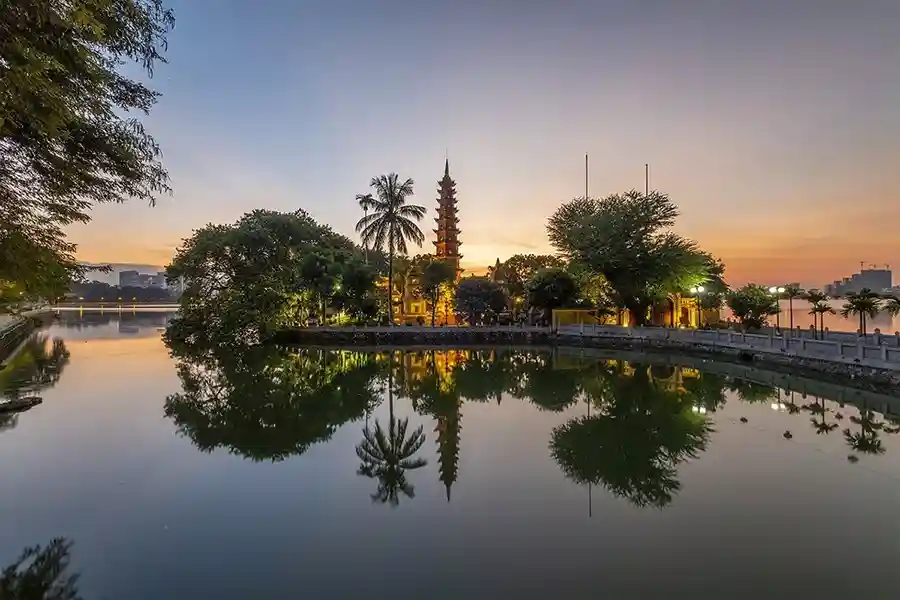
Tran Quoc Pagoda in Hanoi, Vietnam. Photo credit: Mathieu Arnaudet
Confucianism in Vietnam
Confucianism has no sacred book, no place of worship, and no clergy. It is purely a moral teaching — a philosophy meant to help individuals live happily and harmoniously within society.
The moral doctrine of Confucius, who lived in the 5th century BCE, was addressed to everyone — both common people and rulers. A man should conduct himself according to five virtues: benevolence (humanity), righteousness (doing what is right rather than what is in one’s interest), propriety (respect for rituals), wisdom (the ability to distinguish right from wrong), and sincerity (being trustworthy).
Beyond these cardinal virtues, Confucianism clearly defines social roles so that society functions in harmony. The individual is not free but bound to their place and duties within the social hierarchy. Obedience plays a central role in Confucian social philosophy: the subject must obey the king, the son the father, the younger sibling the elder, and the wife the husband.
This moral framework began shaping Vietnamese society as early as the 1st century CE under Chinese rule. Its influence continued to grow even after Vietnam regained independence. In the 11th century, the Temple of Literature (Văn Miếu – Quốc Tử Giám) was built in Hanoi to educate the “sons of the nation,” who would become guardians of Confucian tradition. This Confucian education system endured until 1915.
After a period during which Confucianism was sidelined due to the Vietnamese Communist Party’s policy of “starting from scratch,” it experienced — along with other belief systems — a revival after 1986 and the country’s Đổi Mới (Renovation) reforms. However, as Vietnam continues to develop, education becomes more diverse, and social relationships evolve, Confucianism increasingly appears as an echo of a traditional, hierarchical, and authoritarian past. Today, it is largely associated with respect for tradition, which in a rapidly modernizing and future-oriented Vietnam naturally leads to friction between the older and younger generations.
Confucianism thus evokes a static society, focused on preserving heritage, while the younger generation is dynamic and eager to explore new horizons.
Nevertheless, the moral values it teaches — those that should guide human behavior — remain an important compass in navigating the transformations of contemporary times.
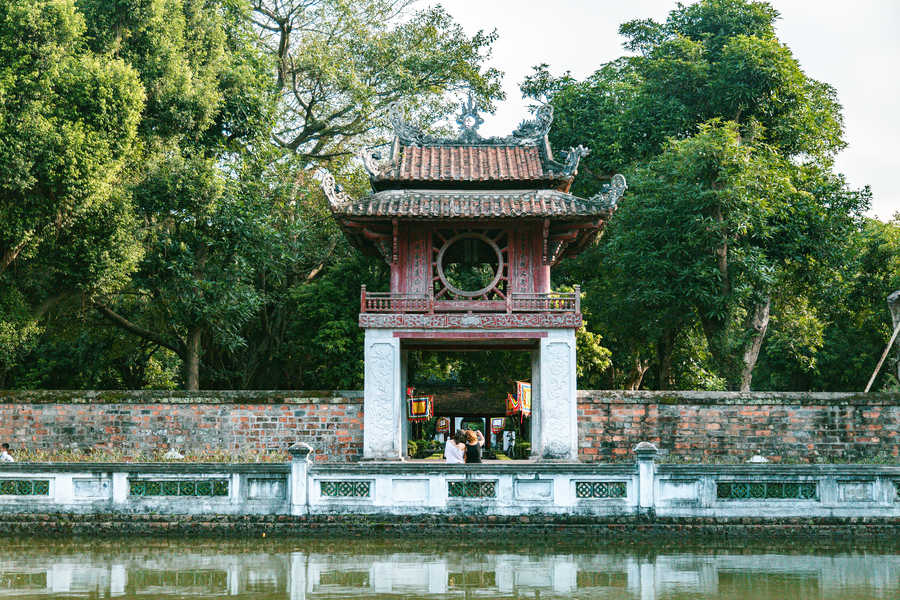
Temple of Literature, Hanoi, Vietnam. Photo credit: Mathieu Arnaudet
Taoism in Vietnam
This doctrine, which emerged in China around the same time as Confucianism, adds a mystical and metaphysical dimension to the Vietnamese Tam Giáo (“Three Teachings”). While the Tao (“the Way”) was initially a somewhat vague philosophy, it gradually evolved—thanks to the disciples of Lao Tzu, its founding figure—into a full-fledged religion with a pantheon of gods. Followers perform rituals and worship these deities in hopes of attaining immortality. The principal deity is Ngoc Hoang, or the Jade Emperor, who rules over all the other gods from the heavens.
We highly recommend visiting the Jade Emperor Pagoda, built at the beginning of the 20th century by the Chinese community of Ho Chi Minh City (then known as Saigon). There, you can learn more about the Taoist pantheon and its religious practices.
Vietnamese culture clearly drew inspiration from Taoism in developing both ancestor worship and its own pantheon of deified heroes and historical figures. In every Vietnamese household, you will see altars dedicated to ancestors and protective spirits. “Ghosts” thus hold an important place in the spiritual life of the Vietnamese. Many festivals across the country, especially after Tết (the Vietnamese Lunar New Year), are dedicated to specific spirits. Beliefs in spirits, divination, geomancy, and astrology remain deeply rooted in Vietnamese popular culture.
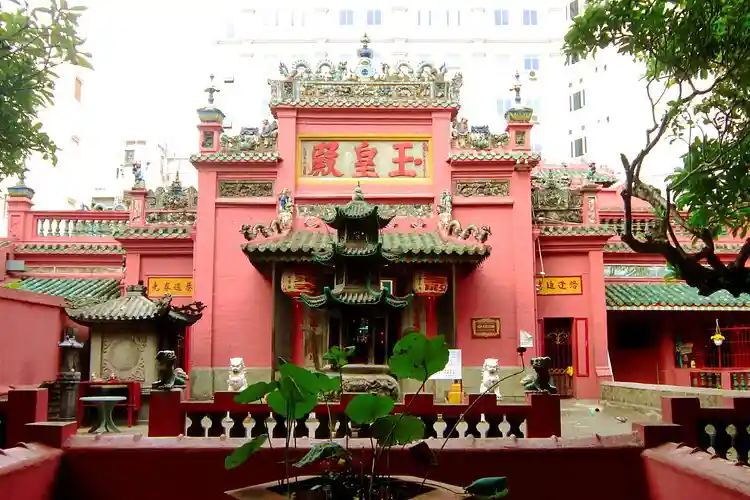
Jade Emperor Pagoda, Ho Chi Minh City, Vietnam
Alongside these belief systems, which shape the daily lives of most Vietnamese people, other religions also exist—such as Christianity and Caodaism. Let’s start with the latter, which is unique to Vietnam.
Caodaism in Vietnam
This movement, also known as “Reformed Buddhism,” originated in southern Vietnam and is said to stem from a revelation experienced by Mr. Ngô Văn Chiêu in the early 1920s during a spiritual séance. During this session, Cao Đài Tiên Ông (“Supreme Being” in Vietnamese) allegedly appeared to him and commanded him to create a new religion.
The defining feature of Caodaism is its attempt to synthesize Eastern and Western religions. The Caodaist Temple, whose Holy See is located in Tay Ninh, about 80 km from Ho Chi Minh City, welcomes believers of all faiths — the ultimate goal being to find peace through spiritual practice
This religion has its own spiritual guides — individuals who have lived a life of deep faith. Alongside the founders of major religions such as Jesus, Muhammad, and Moses, one also finds Joan of Arc and even Victor Hugo, who, while exiled on Jersey around 1850, tried to contact his deceased daughter through séances.
Remaining faithful to its spirit of synthesis, Caodaists worship two deities — a male god named Via Duc Chi Ton and a female deity named Hoi Yen Dieu Tri Cung. Festivals honoring them take place at the beginning of the lunar year, between the 8th and 15th days of the first lunar month. This is the best time to visit the Tay Ninh Temple, as large numbers of followers gather there in a vibrant and colorful atmosphere.
Several other temples also exist throughout Vietnam, including one in Danang. The photo below shows the interior of the Caodaist temple in Danang.
To learn more about Caodaist prayers, you can refer to this article from The New York Times.
We conclude this overview of beliefs in Vietnam with Christianity, which counts nearly six million followers in the country.
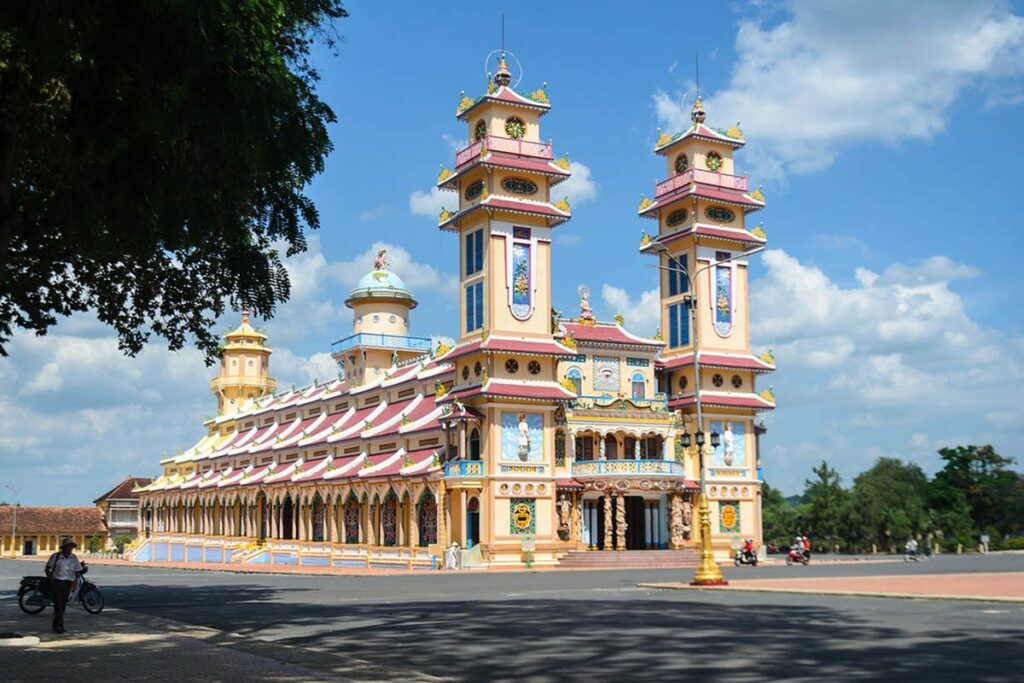
Cao Dai temple in Tay Ninh
Christianity in Vietnam
Christian faith in Vietnam is divided into two main branches: Catholicism and Protestantism, both of which are well represented in the country.
Catholicism accounts for about 6–7% of Vietnam’s population, making it the second-largest Catholic community in Southeast Asia, after the Philippines, where more than 80% of the population identifies as Catholic.
The first conversions to Catholicism in Vietnam date back to the mid-17th century, when Alexandre de Rhodes and other missionaries settled in what they called Tonkin. Subsequent waves of Catholic missions—particularly from the Paris Foreign Missions Society, whose main purpose was evangelization—continued to expand. French missions were not alone: Spanish Dominican congregations also spread Christianity across the country. Following the secularization of the French state in the 19th century, these religious congregations had to become self-sufficient. They managed to do so successfully, as the number of believers grew significantly during the first half of the 20th century. After France’s defeat in 1954, many Catholics fled North Vietnam for the South. When the country was reunified in 1975, many Catholics once again chose to flee—known as the “boat people”—rather than live under communist rule. During this period, all seminaries were closed and did not reopen until 1986, when the “Đổi Mới” (Renovation) policy was implemented.
Today, the Catholic population remains significant, both demographically and politically. For example, in March 2018, more than 10,000 people, including high-ranking members of the Vietnamese Communist Party, attended the funeral of Archbishop Paul Bùi Văn Đọc in Ho Chi Minh City.
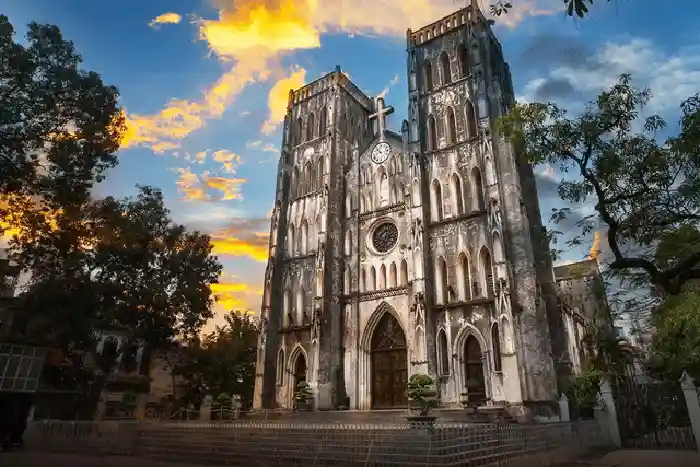
St Joseph Cathedral of Hanoi
While Catholicism was clearly linked to French colonial influence, Protestantism took root later, largely through English-speaking missionaries. The Christian and Missionary Alliance (CMA), an American evangelical organization, established its first mission in 1911 in Danang. The French authorities of the time allowed several pastors to operate, and their numbers gradually increased. Later, French Protestant missionaries also settled in Indochina as Anglo-Saxon influence waned.
Like Catholics, Protestants faced persecution after the reunification of the country, forcing all foreign pastors to leave Vietnam.
According to the 2010 Operation World Atlas, the number of Protestants in Vietnam was estimated at around two million, with the vast majority belonging to Evangelical denominations.
Sources and References
On Buddhism:
Nguyên Thë Anh, « Le bouddhisme dans la pensée politique du Viêt-Nam traditionnel« , Bulletin de l’École française d’Extrême-Orient 2002, vol. 89, pp. 127–14343
On Confucianism:
Confucius, Entretiens, Broché, 2014
On Taoism:
Taoism – a part of the Tam Giao (Three Religions) of Vietnam
On Caodaism:
The “Holy Land” of Caodaism, Vnanet, 2017
On Catholicism:
Le catholicisme au Vietnam, website Au Fil de la Pensée
Les chrétiens sous surveillance, KTOTV broadcast, 2018.
On Protestantism:
Des protestants au Vietnam, Regards Protestants, June 1, 2015.
Jean-Paul Willaime, « Le Vietnam au défi de la diversité protestante », Social Compass, vol. 57, no. 3, 2010, pp. 313–331.


